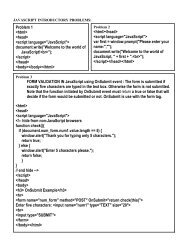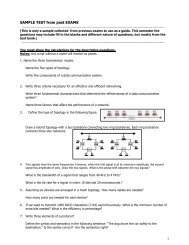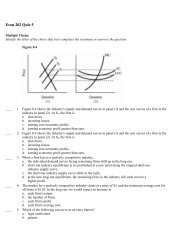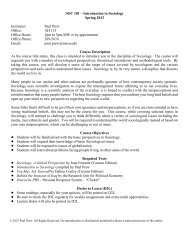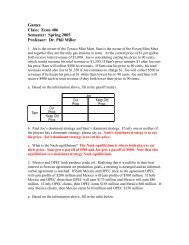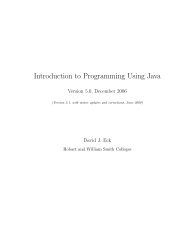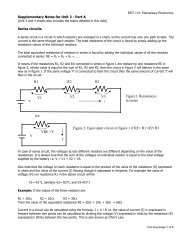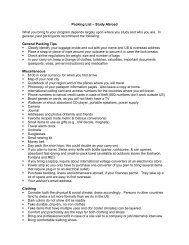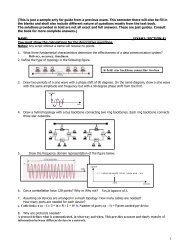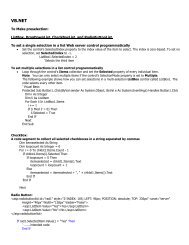Econ 202 Exam 2 Practice Problems - Krypton
Econ 202 Exam 2 Practice Problems - Krypton
Econ 202 Exam 2 Practice Problems - Krypton
You also want an ePaper? Increase the reach of your titles
YUMPU automatically turns print PDFs into web optimized ePapers that Google loves.
Chapter 8<br />
____ 15. If a tax shifts the supply curve downward (or to the right), we can infer that the tax was levied on<br />
a. buyers of the good.<br />
b. sellers of the good.<br />
c. both buyers and sellers of the good.<br />
d. We cannot infer anything because the shift described is not consistent with a tax.<br />
____ 16. If T represents the size of the tax on a good and Q represents the quantity of the good that is sold, total tax<br />
revenue received by government can be expressed as<br />
a. T/Q.<br />
b. T+Q.<br />
c. TxQ.<br />
d. (TxQ)/Q.<br />
____ 17. For good B, the supply curve is the typical upward-sloping straight line, and the demand curve is the typical<br />
downward-sloping straight line. When good B is taxed, the area on the relevant supply-and-demand graph<br />
that represents<br />
a. government’s tax revenue is a rectangle.<br />
b. the deadweight loss of the tax is a triangle.<br />
c. the loss of consumer surplus caused by the tax is neither a rectangle nor a triangle.<br />
d. All of the above are correct.<br />
____ 18. In the market for widgets, the supply curve is the typical upward-sloping straight line, and the demand curve<br />
is the typical downward-sloping straight line. The equilibrium quantity in the market for widgets is 200 per<br />
month when there is no tax. Then a tax of $5 per widget is imposed. As a result, the government is able to<br />
raise $750 per month in tax revenue. We can conclude that the equilibrium quantity of widgets has fallen by<br />
a. 25 per month.<br />
b. 50 per month.<br />
c. 75 per month.<br />
d. 100 per month.<br />
____ 19. Suppose that the government imposes a tax on dairy products. The deadweight loss from this tax will likely<br />
be greater in the<br />
a. first year after it is imposed than in the fifth year after it is imposed because demand and<br />
supply will be more elastic in the first year than in the fifth year.<br />
b. first year after it is imposed than in the fifth year after it is imposed because demand and<br />
supply will be less elastic in the first year than in the fifth year.<br />
c. fifth year after it is imposed than in the first year after it is imposed because demand and<br />
supply will be more elastic in the first year than in the fifth year.<br />
d. fifth year after it is imposed than in the first year after it is imposed because demand and<br />
supply will be less elastic in the first year than in the fifth year.<br />
____ 20. The amount of deadweight loss that results from a tax of a given size is determined by<br />
a. whether the tax is levied on buyers or sellers.<br />
b. the number of buyers in the market relative to the number of sellers.<br />
c. the price elasticities of demand and supply.<br />
d. the ratio of the tax per unit to the effective price received by sellers.<br />
Chapter 10<br />
Note: The practice problems for chapters 9 and 11 follow the practice problems for chapter 10



